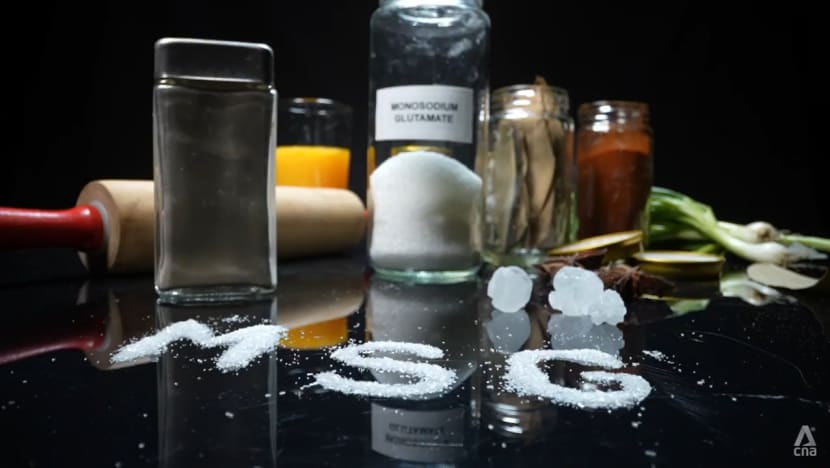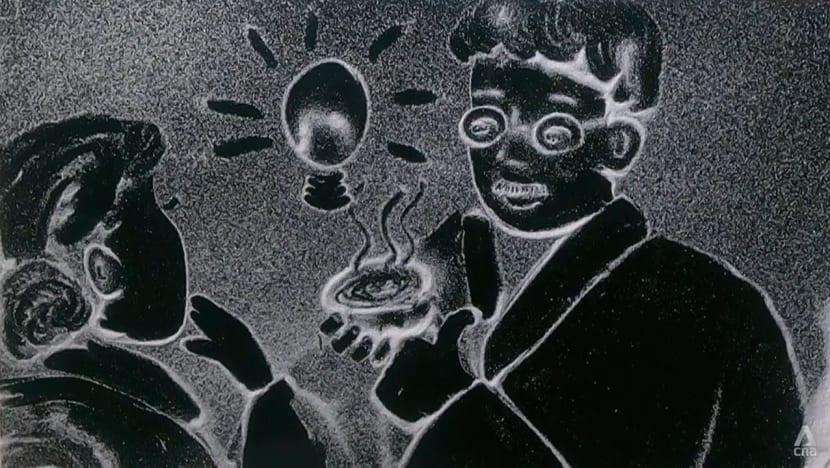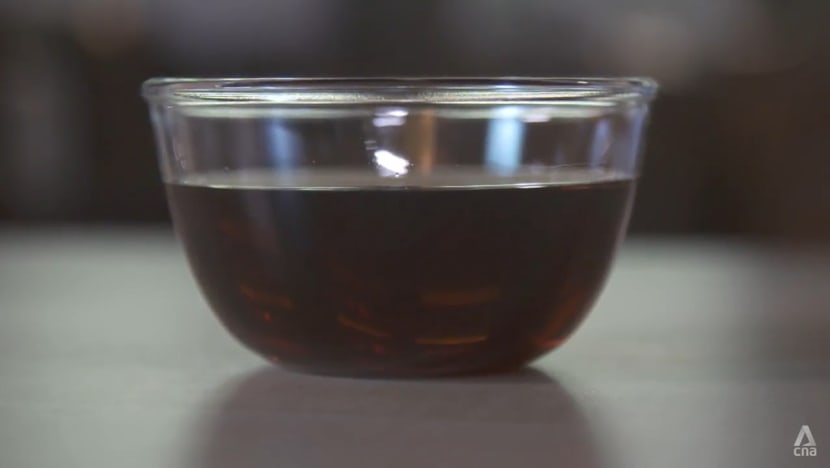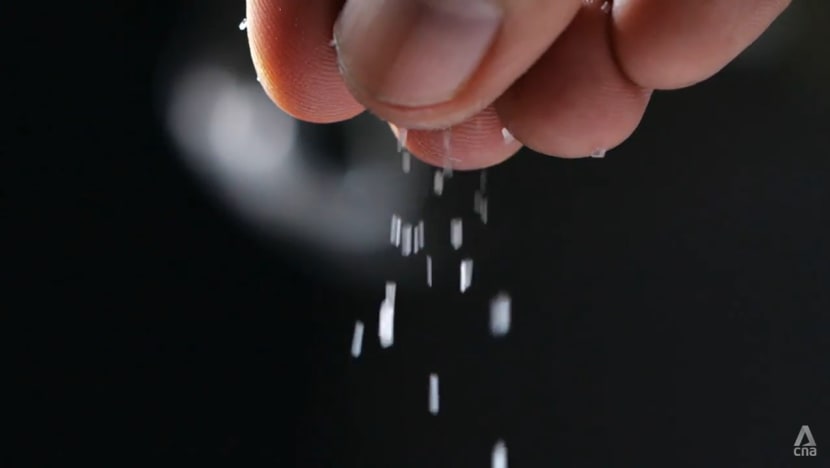You think you know about MSG? It’s time to separate fact from fallacy
It is believed to cause hair loss, headaches and heart palpitations — no wonder most Singaporeans give MSG the thumbs down. But the programme Talking Point finds out seven things you may not have known that may change opinions.

Think you don’t take a lot of MSG? Read on and find out.
SINGAPORE: Monosodium glutamate (MSG) has gained a bad reputation over the years.
Many people think it is linked to a myriad of health issues and side effects, from nausea, heart palpitations and headaches to numbness, excessive thirst and hair loss.
In a recent straw poll on Instagram, the programme Talking Point found that more than half the respondents gave MSG the thumbs down.
But is the popular opinion of this flavour enhancer based on good science? Is MSG really that bad for health? Programme host Rai Kannu comes away with a “shocking fact” as he goes looking for the truth.
1. HOW DID MSG COME ABOUT?
It was 1907 Japan. A wife had just served her husband her seaweed broth, and as the flavours erupted on his taste buds, he had a light-bulb moment: He wanted to replicate the taste of this broth.

University professor Kikunae Ikeda eventually identified its key substance as glutamic acid, naturally found in the seaweed, when he crystallised the ingredient through a series of chemistry experiments and using an evaporation technique.
He created the brand Ajinomoto, and a whole industry.
2. HOW IS MSG MADE IN THE FACTORY?
Ajinomoto’s largest Southeast Asian factory is in Ayutthaya, Thailand. Here, the main raw material for production is cassava root, which is processed into tapioca starch, said deputy factory manager Paiboon Kamonsaranloet.
The starch is dissolved to get a solution containing glucose, which is then fermented in a process “just like” the fermentation that produces wine, beer or yoghurt, he cited. This forms glutamic acid broth.

The broth is filtered to get a clear MSG solution. After that is the process of separating glutamic acid crystals from the broth by heating and drying the solution to form the concentrated glutamate that is sprinkled on food.
“With a name as scientific-sounding as monosodium glutamate, I always thought that MSG was made by mixing chemicals and preservatives,” said Kannu. “Never would I have guessed that it’s made by fermenting natural ingredients like tapioca.”
3. DOES IT REALLY MAKE FOOD TASTE BETTER?
Someone who knows a thing or two about MSG is chef Shen Tan, 50, of private dining experience, Ownself Make Chef.
Citing the five tastes — salty, sour, bitter, sweet and umami — she attests that MSG enhances the flavour of savoury food, making it “that umami that everybody talks about, the fifth taste”.

“MSG together with nucleotides, which are found in meat products like … chicken soup, when added together on the taste buds, (will) tell your brain, ‘This is really delicious,’” she said.
On sweet foods, it may not have the desired effect. But on crisps and nuts, MSG will also set taste buds tingling.
4. IT’S IN MORE FOODS THAN YOU THINK
While MSG may clearly be on the label on canned soups, for example, foodstuffs such as sauces — from oyster sauce to chilli sauce — and processed meats, like sausages and ham, may contain the ingredient without it being listed as such.
Things like “yeast extract” or “hydrolysed yeast” on food labels mean that glutamate, the main component of MSG — which gives it its umami — has been added, cited food scientist Ramesh Krish Kumar, the founder of local nutrition brand, Asmara.

“Flavour enhancer” is another description of MSG in processed foods.
Then there are naturally occurring glutamates in foods such as cheese, fruit juice, nuts and tomatoes. “They’re naturally very high in glutamate,” noted Ramesh.
But is there a difference between consuming, say, glutamates in fresh foods such as tomatoes and industrially made MSG that is added to ketchup or tomato soup?
“If you were to look at the molecular structure … the body sees it as a glutamate molecule. It doesn’t differentiate,” he replied.
The 34-year-old health enthusiast is not deterred by MSG nor does he advise avoiding glutamate completely.
“As you can see, it’s available in various types of food in our diet. It’s very difficult to remove soya sauce from our diet. It’s difficult to remove cheese,” he said.
WATCH: Is MSG actually bad for you? (22:32)
Even breast milk contains glutamate — a fact that shocked Kannu — “so as we grow up, we’re already used to taking glutamate”, added Ramesh.
5. SO WHY HAS MSG GOT A BAD RAP?
For decades, people had also been consuming MSG without any negative claims reported.
Then in the late 60s, a “common misconception” arose from the use of MSG in Chinese restaurants in the United States, cited Ian Tedy, the self-proclaimed “CEO of MSG” on TikTok, who has 61,000 followers and 3.9 million likes.
A doctor who had symptoms such as numbness in the back of the neck whenever he ate in a Chinese restaurant wrote to the New England Journal of Medicine, speculating that MSG might be a cause.

Thus the “Chinese Restaurant Syndrome” was coined, noted Tedy, who described the doctor’s experience as an “isolated” one. “In my home country … we use a lot of MSG,” said the Taiwan-based Indonesian who puts MSG in “everything” he eats.
“If the health effects that this doctor said were true … then a lot of Asians, like Chinese people, Indonesian people, will have headaches every day. But that’s just not the case.”
6. ARE THERE REAL SIDE EFFECTS?
Northeast Medical Group chief medical officer Kelvin Goh suspects that “many of the symptoms” people complain of, including feeling thirsty, “arise from other substances” in foods that tend to be processed and oily — such as fat.
Salt could be a “major contributory factor”, he also cited. “Usually, foods that contain MSG also have high table salt and additive content.”

Some patients do show signs of what is called MSG syndrome.
In the 1990s, a US Food and Drug Administration study suggested this occurs in a “very small” patient subgroup, and “typically in very high doses of three grammes”, or a three-quarter teaspoon of MSG, noted the doctor.
However, no one will routinely consume 3 gm of MSG. That’s like taking six packets of instant noodles’ worth of MSG at a go.”
For individuals who are sensitive to MSG or for whom it causes breathlessness or asthma attacks, he advises avoiding the ingredient.
As for hair loss, he said there was “no strong evidence” of a causal link to MSG consumption. There is also no evidence linking MSG to cancer, he added, noting the natural occurrence of glutamate in various foods.
7. HOW MUCH IS TOO MUCH?
MSG consumption could still affect one’s health if it increases one’s sodium intake. MSG is made up of 78 per cent glutamate, 12 per cent sodium and water.

At hawker centres, vendors may use both MSG and salt, for example in beef kway teow or fried bee hoon.
A fried rice dish with half a teaspoon of table salt (nearly 1,000 mg of sodium) and a teaspoon of MSG (close to 700 mg of sodium) already approaches the recommended daily sodium limit of 2,000 mg.
There is also an acceptable daily intake of MSG, at 30 mg per kilogramme of body weight, according to European Food Safety Authority evaluations, noted Singapore Nutrition and Dietetics Association president Kalpana Bhaskaran.
That works out at 2.1 gm of MSG per day for someone like Kannu, who is about 70 kg.
Bhaskaran said the best way to flavour dishes is “naturally”, with herbs and spices.

“If you still feel something’s lacking … instead of one teaspoon of salt, I’d use one teaspoon of MSG,” she suggested, noting that the same amount of MSG contains only a third of the sodium content.
Goh agreed that using MSG can be an “opportunity” for healthier eating. “MSG enhances the savoury taste in your dish and … could potentially reduce the amount of salt needed,” he said.
Watch this episode of Talking Point here. The programme airs on Channel 5 every Thursday at 9.30pm.






















